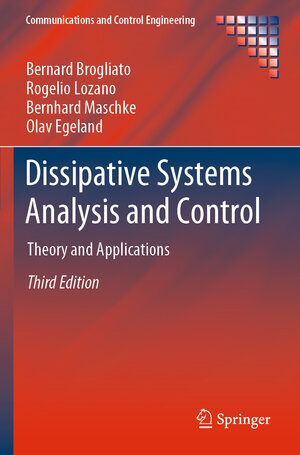
“This monograph presents comprehensive presentation general theory and applications of dissipative systems. The modern development of engineering and technology has a significant impact on this area of research. This monograph opens up new possibilities for many researchers in this field to approach the front line of research.” (Anatoly Martynyuk, zbMATH 1432.93001, 2020)
Dissipative Systems Analysis and Control
Theory and Applications
von Bernard Brogliato, Rogelio Lozano, Bernhard Maschke und Olav EgelandThe third edition of the now standard Dissipative Systems Analysis and Control presents a revised and expanded treatment of dissipative systems theory, constituting a self-contained, advanced introduction for graduate students, researchers and practising engineers. It examines linear, nonlinear and nonsmooth systems, with many examples in each chapter; occasional infinite-dimensional examples are also included. Throughout, emphasis is placed on the use of the dissipative properties of a system for the design of stable and robust feedback control laws or state observers. The theory is substantiated by experimental results and by reference to its application in illustrative physical cases (Lagrangian systems, passivity-based and adaptive controllers are covered thoroughly).
The third edition is substantially updated to accommodate new material within the existing chapter structure. The additions include:
· the introduction of negative imaginary transfer functions;
· the design of stable state observers that use passivity as a tool for their stability analysis;· a new section on robust set-valued control of uncertain Lagrangian systems;
· extended section on discrete-time systems, especially the preservation of dissipativity after discretization;
. a thorough treatment of nonsmooth set-valued Lur'e systems well-posednees and stability;
. an extended chapter on the Kalman–Yakubovich–Popov Lemma; and
. over 1000 references.


